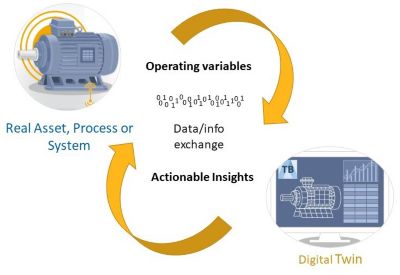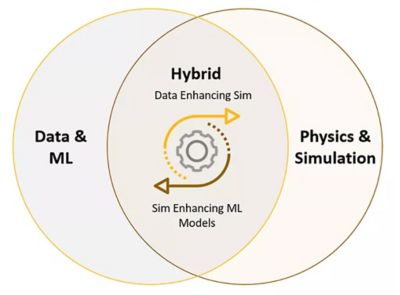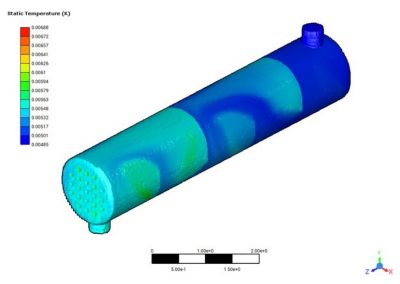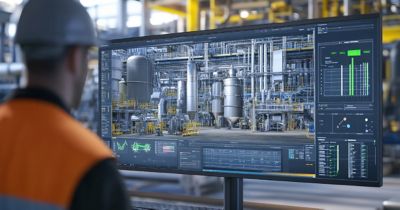-
-
学生向け無料ソフトウェアにアクセス
Ansysは次世代の技術者を支援します
学生は、世界クラスのシミュレーションソフトウェアに無料でアクセスできます。
-
今すぐAnsysに接続!
未来をデザインする
Ansysに接続して、シミュレーションが次のブレークスルーにどのように貢献できるかを確認してください。
国および地域
無料トライアル
製品およびサービス
リソースとトレーニング
当社について
Back
製品およびサービス

Leverage reduced-order models to enhance digital twins and AI/ML training.
One of the biggest challenges in engineering and design is striking a balance between accuracy and speed. Development teams strive for precision but must often accelerate their simulation and computational workflows to meet production demands. Although physics-based, high-fidelity simulations are highly accurate, they are computationally expensive in terms of time and resources due to their complexities. A method known as reduced-order modeling provides a solution.
Reduced-order models (ROMs) are simplifications of complex models that capture the behavior of source models so engineers and designers can quickly study a system’s dominant effects using minimal computational resources. Ansys Digital Twin tools leverage ROMs to reduce computational burdens while retaining accuracy, which democratizes simulation and supports the adoption of digital engineering. In connection, ROMs enhance the industrial application of digital twins with benefits ranging from increased accuracy and speed to reduced spending and resources. ROMs are also an important enhancement to data-driven artificial intelligence and machine learning (AI/ML) training.
Understanding the Power of ROMs
To appreciate the value of reduced-order modeling, you should first understand what a high-fidelity model is and the scope of computational resources needed to solve it.
“Most of the time, a high-fidelity model relies on physical principles to predict complex behaviors, like the deformation of a car crashing against a wall, the air flowing around an airplane, the heat generated by an electric motor, or the electromagnetic interference in electronic devices,” said Lucas Boucinha, a lead product specialist of digital twins at Ansys during an episode of “The Twin Talks,” an Ansys interview series. “Behind the physical principles, there are mathematical equations that are too complex to be solved at hand, except for very simple behavior and geometry.”
This complexity, he says, led computational physics researchers to develop discretization methods that cut geometry into smaller pieces of material, known as elements, on which the mathematical equations are interpolated. The most well-known discretization methods are the finite element and finite volume methods, which Ansys software uses across its ecosystem of multiphysics simulation solutions.
Yet, as industrial assets advance, their complexity does as well. Engineers must describe the geometry and complex behavior of an increasing number of elements. This leads to a system of equations containing hundreds of millions of unknown variables, which engineers can only solve using ample computational resources through high-performance computing (HPC) clusters. However, solving high-fidelity models on HPC clusters can still take days or weeks. Here’s where reduced-order modeling lends significant value.
“Model reduction techniques lead to compacted models that are computationally inexpensive to execute and which can be used to obtain results with a similar accuracy as the high-fidelity models,” said Boucinha. “For example … a high-fidelity model can take a few days on HPC clusters to deliver results, while a ROM can be executed within a few seconds on a laptop to deliver a good approximation of these results.”

Reduced-order models (ROMs) help create digital twins that mirror an asset’s real-life operation.
Ansys has been developing its ROM capabilities for over a decade, with the official release debuting in the Ansys Twin Builder simulation-based digital twin platform in 2018. Today, Ansys ROM capabilities extend to other solutions, including Ansys TwinAI AI-powered digital twin software.
By leveraging AI/ML techniques, Ansys Digital Twin solutions combine the accuracy of physics models with insights from real-world data. This combination powers Ansys hybrid digital twins, which enable real-time monitoring and systems analysis, predictive maintenance, and performance optimization across operating scenarios and product variations, automatically adapting to changing conditions. This makes Ansys hybrid digital twins valuable throughout the product life cycle, including operations and maintenance (O&M).
Traditionally, product teams incorporated simulation into design and development to gain insights or as a post-analysis verification tool. But today, with AI/ML integration, advanced embedded sensors, and methods like reduced-order modeling, engineers can leverage digital twins and extend the value of simulation throughout the product’s operating life.
In addition, hybrid analytics help tackle a primary challenge in digital twin applications — ensuring your digital twin model accurately represents your real-life industrial asset, Boucinha says.

Hybrid digital twins combine data, physics, and artificial intelligence/machine learning (AI/ML) techniques and leverage reduced-order models (ROMs) to provide the most accurate representation of an asset.
Maximize ROM Benefits
According to Boucinha, ROMs lend significant value to optimization through nonintrusive model reduction methods, which are also known as data-driven reduction methods. These methods extract ROMs directly from high-fidelity model results without accessing the core engine in the software that generated the data.
In contrast, intrusive model reduction methods require access to the high-fidelity model’s internal equations, which is not always available in industrial software and relies on a specific implementation for each solver.
“Data-driven approaches are very efficient because you can generate as much training data [for AI/ML techniques] as needed with the high-fidelity model to reach the targeted accuracy,” he said.
In addition to supporting AI/ML training, ROMs advance the democratization of simulation, adoption of digital twins in industry, and product design.
“Reduced-order modeling is a key capability in optimization workflows because, with its speedup, it enables optimization routines to test thousands of design configurations and find an optimal one way faster, helping to shorten the overall product design process,” he added.
In addition, engineers can more easily extract, validate, and share ROMs with other team members. This means that non-simulation experts, including designers, can access accurate insights without expertise with high-fidelity model creation and perform real-time what-if analysis to make design and development decisions. This also increases productivity and collaboration across an organization.
Outside of internal workflows, ROMs help create a new ecosystem for manufacturers and original equipment manufacturers (OEMs). For example, Ansys ROMs embed the value of simulation insights into autonomous components that engineers can plug into larger systems. This enables suppliers to share simulation insight with their customers through simplified ROMs of these components. Boucinha says this is especially valuable for product design involving complex components in which a 3D model cannot simulate the entire product.

Ansys multiphysics simulation tools evaluate ROMs to explore design alternatives. For a crossflow heat exchanger, the ROM capability in Ansys Fluent fluid simulation software provides a solution for each design point in as little as a second, while a full simulation could take over two hours.
Extend the Value of Simulation
ROMs support digital engineering and the democratization of simulation by simplifying and streamlining complex modeling while supporting real-time analyses and predictions.
Hear more from Boucinha about ROMs in episode 10 of “The Twin Talks.”
Watch the free on-demand webinar “Boost Simulation with Reduced-order Models using Ansys Twin Builder” to learn more about how Ansys hybrid digital twins and ROMs can improve your workflow.
The Advantage Blog
The Ansys Advantage blog, featuring contributions from Ansys and other technology experts, keeps you updated on how Ansys simulation is powering innovation that drives human advancement.



